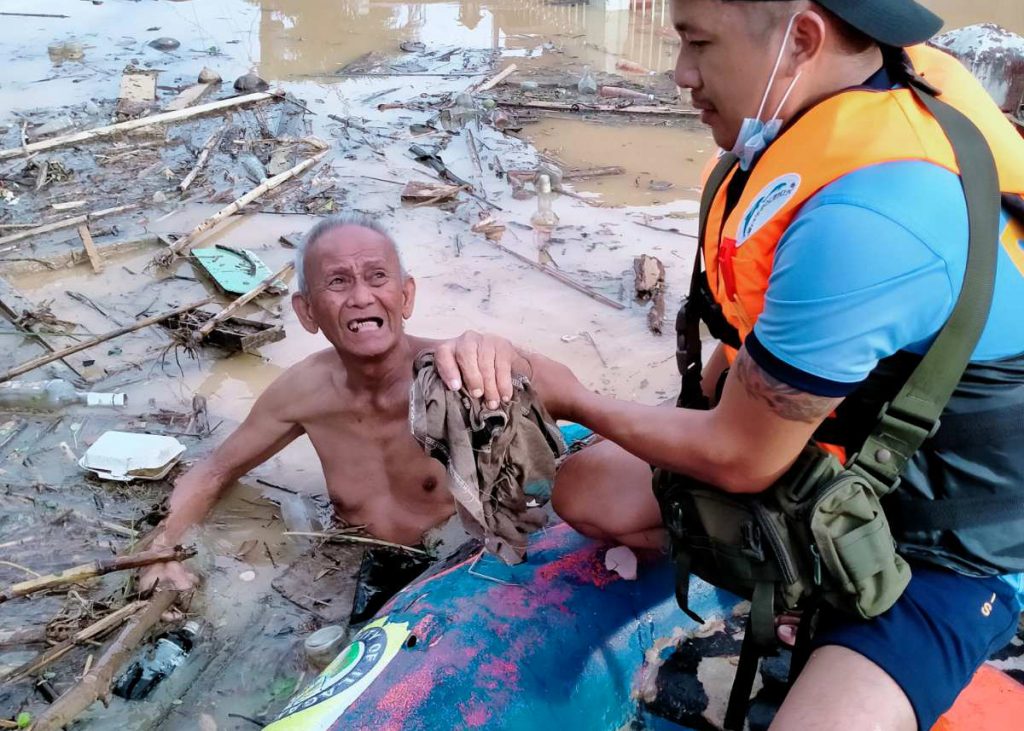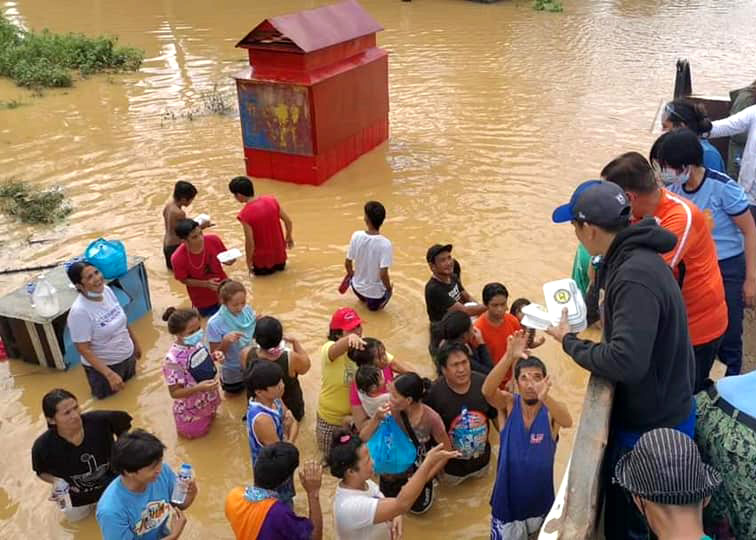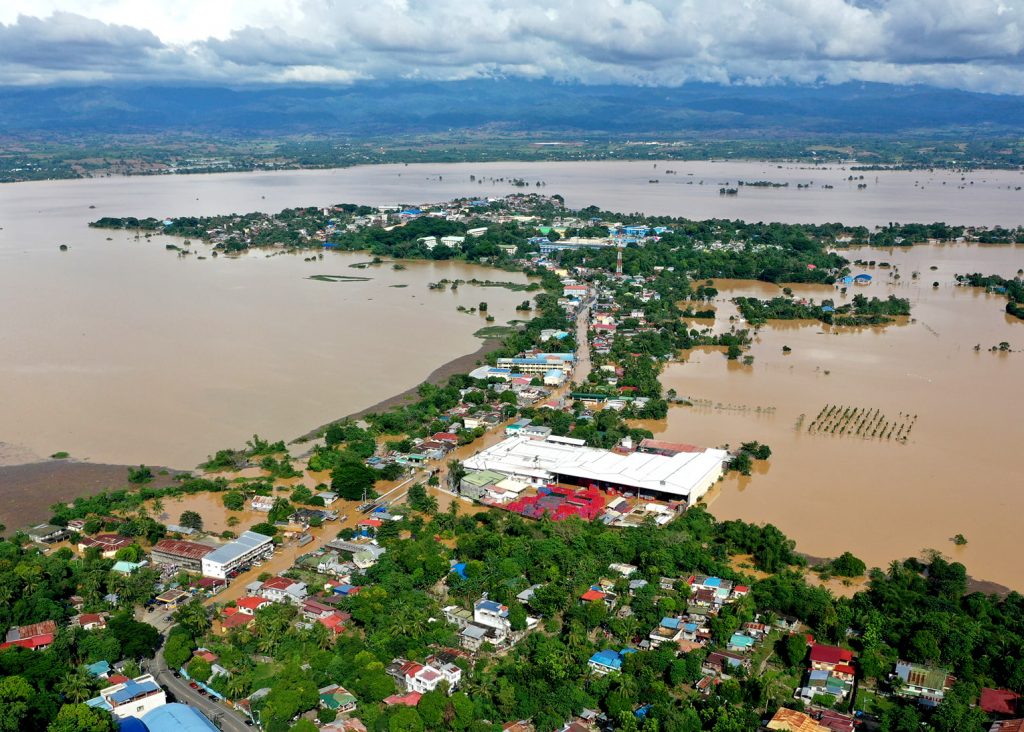
It all happened so quickly.
Screams in the dead of night, voices made more hair-raising by a darkness and a storm which refused to let up.
Through several recorded audios posted on Twitter and shared on Facebook, thousands of people from Linao East in Cagayan, trapped on rooftops, made a desperate attempt to call the attention of the national government.
In the middle of their cries, I was informed that the local government of Cagayan had restricted the entry of journalists and rescue teams by a standing order that everyone who’d enter the province must first undergo a 14-day quarantine.
This restriction, based on current COVID-19 protocols, forced people to use their social media accounts as coverage of the tragic event came few and far between. The dearth left Metro Manila totally in the dark as to what was happening in Cagayan and Isabela.
In the recordings, I heard the yelps of children amid the faint onrush of floodwater reportedly 15 feet high, of mothers and sisters trying frantically to hold on to whatever was left of rooftops, the only part of the house that had not suffered the indignity of surrendering to the raging flood.
Mere seconds later, silence.
In the guilty comfort of my home some 591 kilometers away, I read the post of the former president of the College Editors Guild of the Philippines (CEGP), Jose Mari Callueng, who was in Isabela at the time, monitoring the events in Linao East. It was quarter to three in the morning.
“I’m getting information that those caught in a video screaming for help in Linao East have died even before rescuers reached the area. Those are voices of children, begging for help in the dark, flooded location.”
On the comment thread of the said post, someone who lives in Cagayan claimed that the bodies had been found, but unfortunately dead.
Earlier, sometime a quarter past one in the morning, someone trapped on a roof in Linao East tweeted his elder brother in Manila that not all can be rescued from the flood.
Much later, I chanced upon a post saying that the rescue teams which arrived from the Philippine Army and the Coast Guard were much too small to save the thousands yet needing assistance.

Vice President Leni Robredo, who, apparently, was the only national government official awake that night, tweeted that while there were a few rescue choppers and their pilots willing and ready at a moment’s notice to begin rescue efforts, the pilots weren’t trained for night flights.
This proved disastrous to the overall plan. Authorities on the ground had no choice but to cancel the rescue operations sometime three in the morning, only to resume sometime five.
At around half past midnight, I read a Rappler report saying that “The Coast Guard District North Eastern Luzon has rescued 276 individuals in Isabela and Cagayan as of 12:30 a.m., Saturday, November 14.”
The population of Linao East alone, a barangay in Tuguegarao, is already a little over 6,000. Isabela posts a population of 129, 997.
Sometime five in the morning of November 14, confirmation of the arrival of 15 boats in Alcala, Cagayan came by way of Mayor Tin Antonio. However, of the seven villages, only Jurisdiccion, Damurog and Baybayog received three boats each. Pagbankeruan and Pared got two boats while Pinopoc and Calantak only one.
If we go by the tens of thousands holding residence in the area, even 50 boats may not even be sufficient to save in the nick of time all those trapped on rooftops.

The dearth in news coverage seems to have placed Metro Manila at the tail end of what was happening. Rappler said that “As of 3 a.m., November 14, 4 speedboats from the Philippine Coast Guard Manila are now on their way to Tuguegarao according to 1st District City of Cagayan board member AJ Ponce. A chopper is also set to arrive in the morning.”
My question: why only now? And why only four speedboats and one chopper?
Interaksyon may have a clue as to why: “During the deliberations of the 2020 National Budget last year, Congress reduced NDRRMC’s budget allocation to only 16 billion pesos, a 4 billion pesos cut from Duterte’s initial proposal of 20 billion pesos.
“In its January 2020 report, think tank Ibon Foundation said that the administration also slashed calamity funds in 2017.
“‘The NDRRMC (National Disaster and Risk Reduction Management Council) budget was cut by more than half (23 billion pesos) to just 15.8 billion pesos in 2017 from 38.9 billion pesos in 2016 under the Aquino administration,’ the report read.”
Thanks to Anakbayan, the national democratic mass organization of the Filipino youth, some details of the tragic events of the past few hours reached netizens in Metro Manila.
Based on the report, a Philippine Red Cross Team from Nueva Vizcaya, a good 331 kilometers away, would arrive in Cagayan sometime six in the morning.
By 11:50 p.m., the Tuguegarao Command Center reported that the whole city was submerged underwater, affecting 30,332 families, submerging the home of 28,676 families, with only 536 evacuated into LGU evacuation centers.
In Sanchez-Mira, roughly six villages have been submerged in floodwater over and above 15 feet while in Barangay Lanao, Tuguegarao City, the area was inundated by no less than 15 feet of water.

The death toll, due to drowning and electrocution, has yet to be counted in full. For still unknown reasons, those responsible for the management of electricity did not see it fit to cut the power at the height of the flooding.
While Typhoon Ulysses scantily passed over Cagayan and Isabela, the decision earlier to open seven of Magat Dam’s floodgates apparently caught the region unawares.
According to an article by Esquire Philippines, “In some areas, the flood is so high that it has reached electrical cables. The combination of live wire and water has already electrocuted and killed several residents. The LGU is appealing to the national Grid Corporation of the Philippines to turn off power so the rescue team can enter these danger zones and save the people who remain.”
It adds, “The final tally remains uncertain as it is assumed some residents have lost connection or battery. However, according to the Cagayan PIO, the number of affected individuals is almost 85,000. More than 37,000 have been rescued. All municipalities in the province had been inundated. As for casualties, the region records eight in Cagayan. The main causes of death have been drowning and electrocution.”
Even as Cagayan whirled from one tragedy after the next, the Philippine Star’s Victor Martin reported on Facebook that “at least 10 bodies buried in a landslide had been recovered by search and retrieval crews on Friday in Barangay Runruno, Quezon, Nueva Vizcaya.” The reporter added that two large-scale mining companies operated there, “and the one where the landslide happened is a mining-affected community.”
While it’s easy to blame climate change for the catastrophe we’ve seen in Cagayan, there is also the question of why those responsible for Magat Dam released that much water without evacuating the people.
Magat Dam is one of Asia’s largest dams where each gate can open at four meters and spew 5,073 cubic meters per second of water. It began operations in 1983.
We cannot now—or ever—list down this recent tragedy in Cagayan as another one of Nature’s tantrums. There’s a human hand which tainted the region’s rivers with blood, and it’s up to us to find out who it is.
Or better yet, who they are.
Joel Pablo Salud is an editor, journalist and the author of several books of fiction and political nonfiction. The views and opinions expressed in this article are those of the author and do not necessarily reflect the official editorial position of LiCAS.news.
Source: Licas Philippines
0 Comments